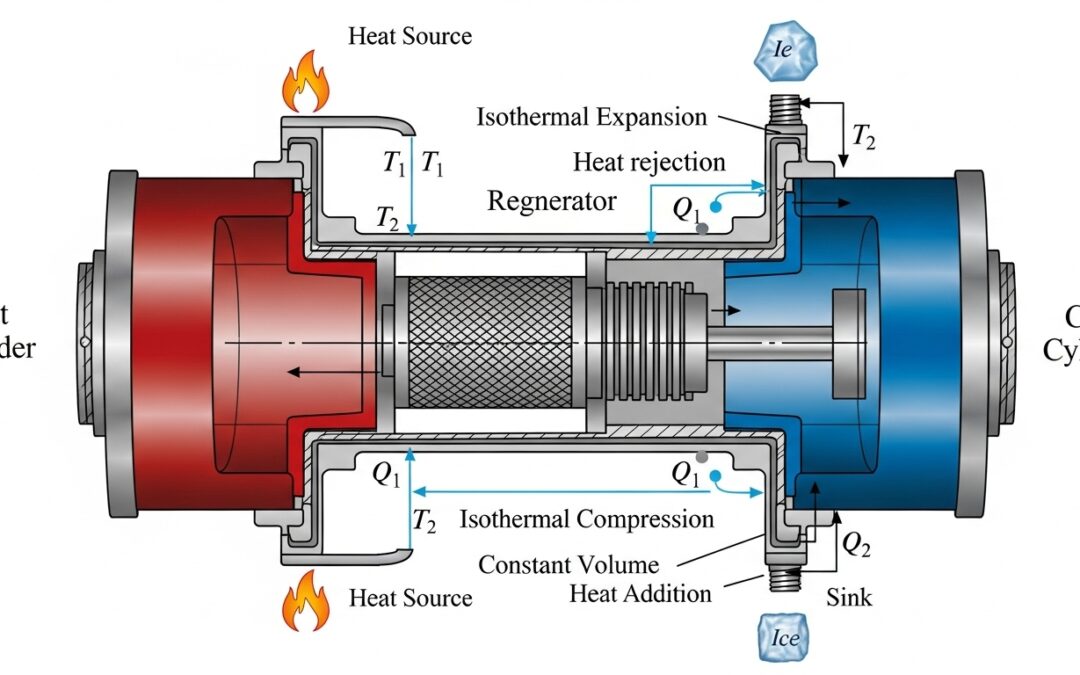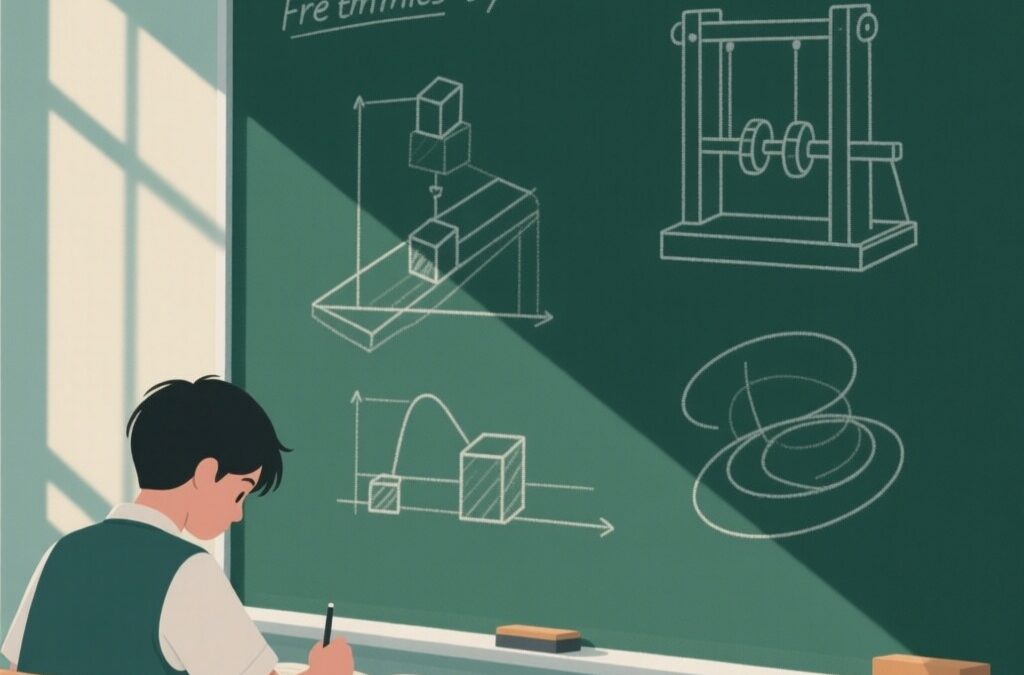Quantum mechanics, a cornerstone of modern physics, delves into the intricate world of the very small. This exploration often centers around wave-particle duality, a concept where particles, like photons and electrons, exhibit both wave-like and particle-like characteristics. Understanding this duality is key to comprehending the complexities of quantum information and the potential of quantum computers. This fundamental principle, initially proposed by Isaac Newton, has been confirmed through numerous experiments, highlighting the duality’s significance.
Consequently, the concept of wave-particle duality has been a subject of intense study and debate since its inception. Early physicists wrestled with the nature of light, proposing either a particle or wave model. However, the development of quantum mechanics in the 20th century provided a framework to reconcile these seemingly contradictory perspectives. This duality isn’t unique to light; it extends to all fundamental particles, underscoring the profound implications of quantum mechanics.
Table of Contents
We also Published
“The confirmation of entropic uncertainty in a real-world experiment opens up exciting possibilities for future applications in quantum information science.”
Quantum Physics Experiment into Wave-Particle Duality
Quantum mechanics, a cornerstone of modern physics, explores the bizarre and fascinating world of the very small. One of its most intriguing concepts is wave-particle duality, a phenomenon where particles, like photons and electrons, exhibit both wave-like and particle-like properties. Understanding this duality is crucial for comprehending the intricacies of quantum information and quantum computers. This fundamental concept, initially proposed by Isaac Newton, was later confirmed by various experiments throughout the 19th and 20th centuries, culminating in the understanding that light, and other particles, can exhibit both wave-like and particle-like behaviors. This duality is not just a theoretical curiosity; it has profound implications for the development of future technologies.
The concept of wave-particle duality has been a subject of intense study and debate since its inception. Early physicists, like Newton and others, grappled with the nature of light, proposing either a particle or wave model. However, the development of quantum mechanics in the 20th century provided a framework to reconcile these seemingly contradictory perspectives. The discovery of photons, the fundamental particles of light, demonstrated that light possesses both wave-like and particle-like characteristics. This dual nature is not unique to light; it extends to all fundamental particles, highlighting the profound implications of quantum mechanics.
The complementarity principle, formulated by Niels Bohr, further clarifies this duality. It posits that the wave and particle aspects of a quantum system are complementary; they cannot be observed simultaneously. The act of measurement dictates which aspect is revealed. This principle highlights the inherent uncertainty and probabilistic nature of quantum mechanics. Understanding this principle is essential for comprehending the limitations of measurement in the quantum realm. The uncertainty principle, a fundamental concept in quantum mechanics, further emphasizes this probabilistic nature, showing that certain pairs of physical properties cannot be simultaneously known to arbitrary precision.
The evolution of understanding wave-particle duality has led to significant advancements in various fields. The ability to manipulate quantum systems, like photons, has opened doors to new possibilities in quantum computing, communication, and metrology. Modern research in quantum information processing relies heavily on understanding and exploiting wave-particle duality to develop novel technologies. This understanding is fundamental to harnessing the potential of quantum mechanics for practical applications.
Experimental Confirmation of Entropic Uncertainty
Researchers have successfully demonstrated a direct link between the complementarity principle and entropic uncertainty in a quantum system. This confirmation builds upon earlier theoretical work and provides a practical demonstration of the fundamental principles of quantum mechanics. The experimental results align with theoretical predictions, further solidifying our understanding of quantum phenomena. This validation of theoretical predictions is crucial for the development of new technologies based on quantum principles.
The experiment utilized a novel experimental setup, employing photons with orbital angular momentum. This approach allowed for the precise control and manipulation of the photons, enabling researchers to observe the interplay between wave and particle characteristics. The use of orbital angular momentum offers advantages in terms of information capacity compared to more traditional approaches. The choice of this approach highlights the potential of this method for future practical applications.
The results of the experiment provide valuable insights into the behavior of quantum systems. The observed behavior aligns with the predictions of quantum mechanics, demonstrating the validity of the theory in a real-world scenario. The experiment’s findings have significant implications for the development of quantum technologies, including quantum communication and cryptography. The confirmation of the theory’s predictions is a significant step towards the practical application of quantum mechanics.
The experiment’s innovative design opens up new avenues for research in quantum mechanics. Further experiments could explore the behavior of quantum systems under varying conditions, providing a deeper understanding of the underlying principles. The ability to control and manipulate quantum systems in this way is essential for the development of quantum technologies.
Future Applications and Implications
The findings have promising implications for various fields, including quantum communication, metrology, and cryptography. The ability to manipulate quantum systems with high precision opens doors to secure communication channels and ultra-precise measurement techniques. These applications demonstrate the practical utility of quantum mechanics and its potential to revolutionize various sectors.
The experimental setup, using orbital angular momentum and interferometers, offers unique advantages for future research. This method could enable more efficient and secure quantum communication protocols. The use of interferometers provides a powerful tool for manipulating and measuring quantum systems, offering possibilities for advanced applications in various fields. The use of this technology can revolutionize the way we approach quantum computing and communication.
The researchers plan to further investigate the impact of changing experimental parameters, such as the settings of the second crystal, on the behavior of photons. These future experiments could lead to the development of secure encryption methods for quantum communication. Further research could explore the potential for quantum computing and metrology, unlocking new possibilities for various applications. These future experiments will further validate the theoretical predictions and enhance the understanding of quantum phenomena.
The research highlights the importance of basic scientific inquiry. Fundamental research, like this study, often paves the way for future technological advancements. The findings contribute to a deeper understanding of quantum mechanics and its applications. This study serves as a testament to the ongoing quest to unravel the mysteries of the quantum world and its potential to transform our future.
The Ever-Expanding Quantum Frontier
The research demonstrates a significant step forward in our understanding of quantum phenomena. The confirmation of entropic uncertainty in a real-world experiment opens up exciting possibilities for future applications in quantum information science. The experimental results have implications for quantum computing, communication, and metrology. This research highlights the continued exploration of the quantum realm and its potential to revolutionize various fields.
The experiment’s innovative design and the researchers’ meticulous approach have resulted in a significant advancement in the field. The use of orbital angular momentum and interferometers offers unique advantages for future research. The findings highlight the importance of fundamental research in driving technological progress. The experiment’s findings are a testament to the power of scientific inquiry and its potential to transform our future.
The results of this research have significant implications for the future of quantum technologies. The findings could lead to the development of new quantum communication protocols, more precise measurement techniques, and advanced cryptographic systems. The research opens new avenues for exploring the quantum world and harnessing its potential for practical applications. The study highlights the continued exploration of the quantum realm and its potential to revolutionize various fields.
Further research in this area will undoubtedly lead to even more groundbreaking discoveries and innovations. The study emphasizes the importance of fundamental research in driving technological progress. The findings contribute to a deeper understanding of quantum mechanics and its applications. The study serves as a testament to the ongoing quest to unravel the mysteries of the quantum world and its potential to transform our future.
| Topic | Summary |
|---|---|
| Wave-Particle Duality | Quantum mechanics explores the wave-particle duality of particles like photons and electrons, demonstrating that they exhibit both wave-like and particle-like properties. This duality is crucial for quantum information and quantum computers. The complementarity principle states that these aspects are complementary and cannot be observed simultaneously. |
| Experimental Confirmation | Researchers have experimentally confirmed the link between the complementarity principle and entropic uncertainty in a quantum system, using photons with orbital angular momentum and interferometers. The results validate theoretical predictions and have implications for quantum communication and cryptography. |
| Future Applications | The findings have promising implications for quantum communication, metrology, and cryptography, potentially leading to secure communication channels and ultra-precise measurement techniques. The use of orbital angular momentum and interferometers offers unique advantages for future research. |
| Quantum Information Science | The study highlights the importance of fundamental research in driving technological progress in quantum information science, opening new avenues for exploring the quantum world and harnessing its potential for practical applications. |
Quantum Mechanics: Wave-Particle Duality and Experimental Confirmation
- Wave-Particle Duality Explained: Quantum mechanics reveals that particles like photons and electrons exhibit both wave-like and particle-like behaviors. This duality is a cornerstone of the field, crucial for understanding quantum information and quantum computers. Think of it like a particle that can act as a wave, and a wave that can act like a particle—pretty mind-bending, right?
- Historical Context and Significance: The concept of wave-particle duality has been debated since early physics. Early physicists struggled to reconcile the particle and wave models of light. Quantum mechanics, developed in the 20th century, provided a framework to understand this duality for all fundamental particles, not just light. This is a major leap in our understanding of the universe.
- Complementarity Principle and Uncertainty: Niels Bohr’s complementarity principle is key here. It states that the wave and particle aspects of a quantum system are complementary, meaning you can’t observe both simultaneously. This uncertainty is fundamental to quantum mechanics and impacts how we measure things at the quantum level. It’s like trying to catch a glimpse of both sides of a coin at the same time.
- Experimental Confirmation: The experiment using photons with orbital angular momentum successfully demonstrated a direct link between the complementarity principle and entropic uncertainty. This experimental confirmation validates theoretical predictions and highlights the power of experimentation in quantum mechanics. This is important because it shows that the theory actually works in the real world.
- Future Applications and Implications: The research has exciting implications for quantum communication, metrology, and cryptography. The ability to manipulate quantum systems precisely opens doors to secure communication and ultra-precise measurements. This research is paving the way for new technologies.
- Ongoing Research and Exploration: The researchers plan to investigate how changing experimental parameters affect photon behavior. This is just the beginning, and further research could lead to secure encryption methods, quantum computing advancements, and even more. It’s a constantly evolving field!
We also Published
RESOURCES
- Simple Quantum Mechanics Experiments
- Double-slit experiment:Quantum Measurement
- Experiment and the foundations of quantum physics
- Stern–Gerlach Experiment and Quantum Mechanics
- The Double Slit Experiment and Quantum Mechanics∗
- LHC Experiments Observe Quantum Entanglement
- Quantum Experiment in Space
- Important Quantum Experiments of 2019
- Key Experiments in Quantum Mechanics
- Quantum Physics Experiments Explained
- Quantum Double-Slit Experiment with Momentum





0 Comments